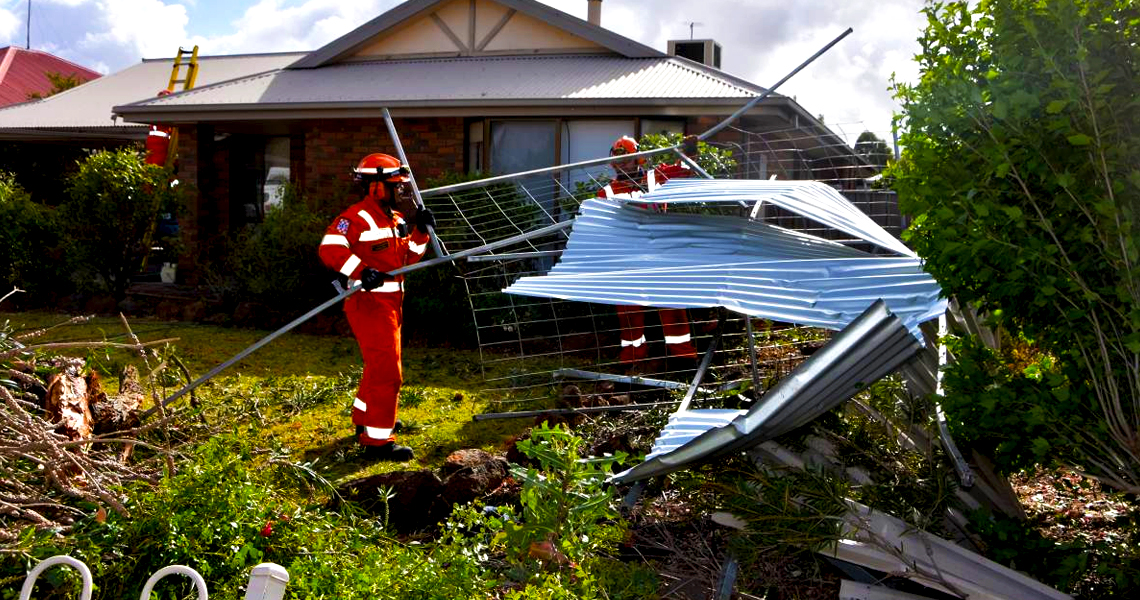
The phrase “keeping a roof over your head” is commonplace today particularly in matters home. But did you know that maintaining, repairing or replacing a damaged roof can become one of the most expensive projects for a homeowner? Read on to find out why.
Hailstones, snow, rainfall, ice, falling debris or tree branches can cause significant damage to your roof—keeping in mind that it’s not cheap to repair or replace a roof. In fact, the typical range for any roof repair project lies between $5,569 and $11,413, as per the 2020 data gathered by HomeAdvisor, a site dedicated to home improvement.
Thankfully, most homeowners insurance policies cover roof repair or replacement if the damage is caused by an act of nature or an unexpected accidental event. This is one of the major reasons why people take homeowners insurance.
What Makes Homeowners Insurance Coverage Ideal for You
Your roof is an integral part of your home, hence your homeowners insurance policy simply safeguards it from various situations beyond your control including hailstones, fire, falling objects among others.
If your roof gets damaged by an event that is covered in your policy, you can lodge a claim with your insurer for a complete or partial roof replacement. However, your insurance company will not pay to repair or replace a roof that has deteriorated due to neglect or the general wear and tear.
“Homeowners insurance isn’t a maintenance policy. You’re responsible for maintaining your own roof like you’re responsible for maintaining the rest of your house,” explains Jordan Callender.
If you have no idea what most insurers include in their policies when it comes to your roof, below are the common perils in homeowners insurance covers:
- Hail
- Fire
- Wind
- Vandalism
- Falling objects
- Lightning strikes
- Natural disasters
Insurers may not cover roof damage in case:
- Your roof is older (10-20 years or older)
- There’s lack of proper roof maintenance, leading to roof damage
- Of accidental or intentional damage caused by the homeowner
- You reside in a state with hailstorm and windstorm exclusions, or where hail storms and hurricanes are common
Watch Out for Disaster Deductibles
Whenever you lodge an insurance claim, you pay a deductible. This is usually the amount paid on an insurance claim before the policy pays the rest.
It’s a norm for hail, wind and hurricanes to be covered under the homeowners insurance policy; however, flood and earthquake insurance covers are purchased separately though each disaster comes with its own deductible rules based on the insurer and where one lives.
For instance, hurricane deductibles are normally higher than homeowners policy deductibles for other events and is based on a percentage of the overall policy maximum, according to an article by the Insurance Information Institute.
Hence, if you reside along the coastline or an area prone to hurricanes, you could eventually pay a deductible that’s very different from the one you initially chose.
Staying in the know about available types of disaster deductibles such as wind, hurricanes and hail can incredibly help you avoid surprise costs along the way. Be sure to check your policy and consult your insurer to learn more on how your deductibles work.
Filing an Insurance Claim for a Damaged Roof After a Storm
Homeowners with a damaged roof can use a standard process to lodge their insurance claims. Ordinarily, the process of filing a claim should be seamless; however, dealing with insurers can sometimes be a pain in the neck and pure frustration. To help you prepare effectively for both, below is a step-by-step guide to take you through it all.
1. Contact Your Homeowners Insurance Company
Immediately after a storm, inspect your roof and in case you suspect any damage, be sure to contact your insurer as soon as possible. Take multiple pictures and detailed notes of the damage caused to the house from the ground—both exterior and interior. This documentation comes in handy when filing your claim. Avoid climbing atop your roof to assess the damage as you could easily slip and get injured.
2. Find the Right Roofing Contractor
The next step is to identify at least three roofing contractors. Let each contractor inspect the roof and offer quotes for repair or replacement of the roof that you’ll forward to your claims adjuster later.
3. File your Insurance Claim
When the roofing contractor confirms damage to the roof, you can then lodge a claim with your insurer. It’s advisable that you contact your insurance company via phone, and depending on your their processes, you may file the claim online.
Remember time is an important factor in the submission of a claim. In most cases, homeowners have up to a year to lodge their claim. Some states provide more time, including two years to six years for homeowners to file their claims. While this duration varies from state to state, generally the sooner you submit your claim the better.
Be sure to save every conversation with your insurance company and any important detail along the way. As you file the claim, submit picture documentation of the roof damage and receipts of any costs incurred. For instance, your insurance company will cover the additional living costs if the covered peril temporarily rendered your home unfit for habitation.
4. Schedule an Appointment with an Insurance Adjuster
Your insurer will plan to have their adjuster come to your home and inspect the extent of damage to your roof. The adjuster will climb up the roof, assess the damage, determine what is or is not covered by the roof claim submitted and provide you with a true estimate to give the roofing contractor. Request the insurance adjuster to share with you any documentation as pertains to the state of the roof or the claim filed.
Keep in mind that roofers are not allowed to negotiate with insurers, and there’s a law that dictates that. If a homeowner really wants to argue with their insurance company, then they have to go through a public adjuster.
However, a skilled roofing contractor will show up on your appointment in the company of your claim adjuster to ensure a fair inspection and estimate.
5. Repair or Replace Your Roof
This final step involves having the roofing contractor determine whether the roof needs to be fixed or replaced, based on the severity of the damage.
In case of changes to the initial estimate, ensure you get all the relevant documentation to this effect. Typically, it takes a day to repair or replace a roof, notes Feller, and once the project goes through a city inspection, then it’s as good as officially done.
“Generally, the insurer wires the payment to the client. And in case a mortgage company is in the picture, they’ll add them to the check,” Feller explains. “The homeowner is required to endorse the check, deposit it and then pay the roofing contractor.”
Ready To Start Your Claim? Contact our expert claim consultants to help you plan for life’s catastrophic events.
Need Assistance?
Ready To Start Your Claim Review?
Contact us to book a no‑obligation claim review.


